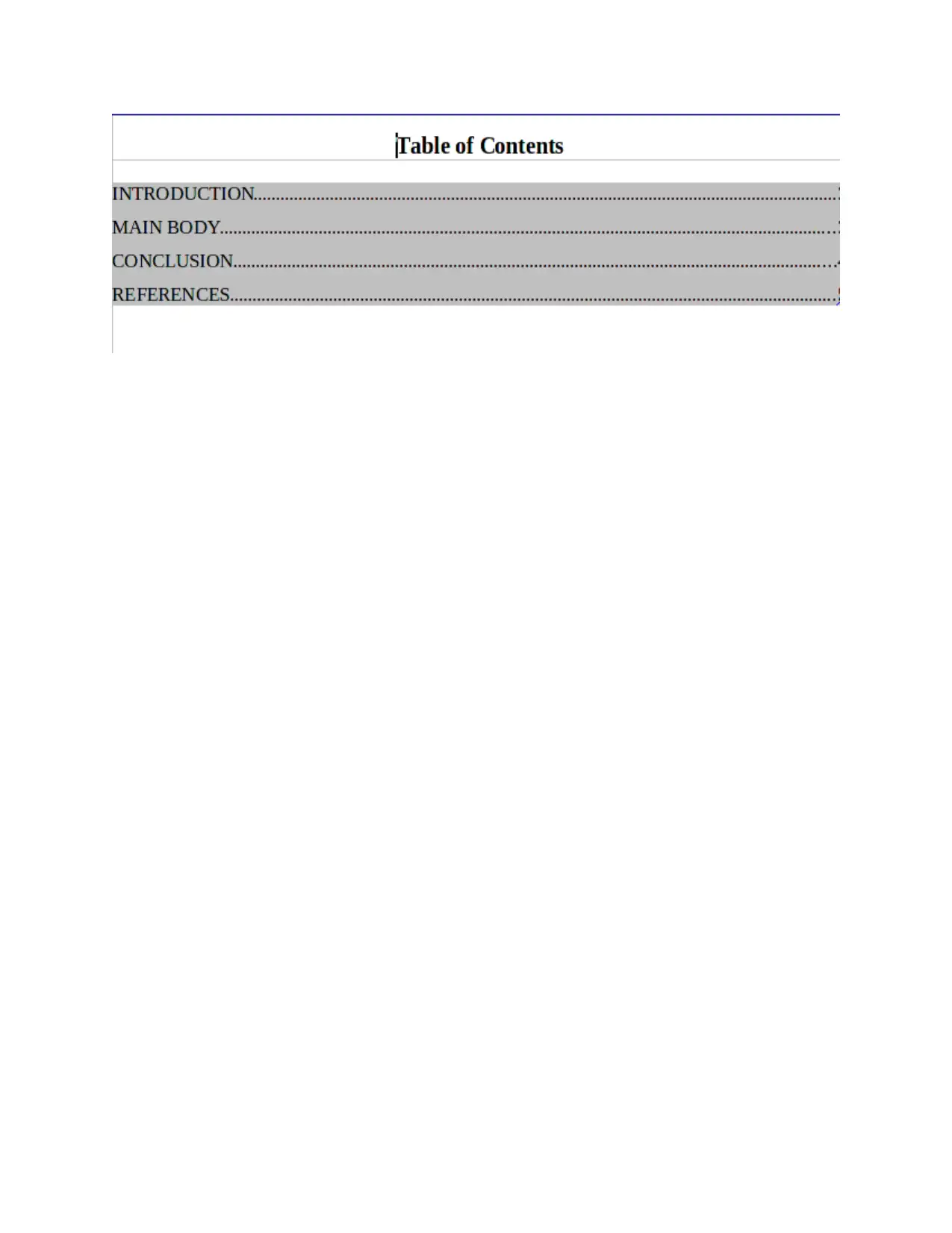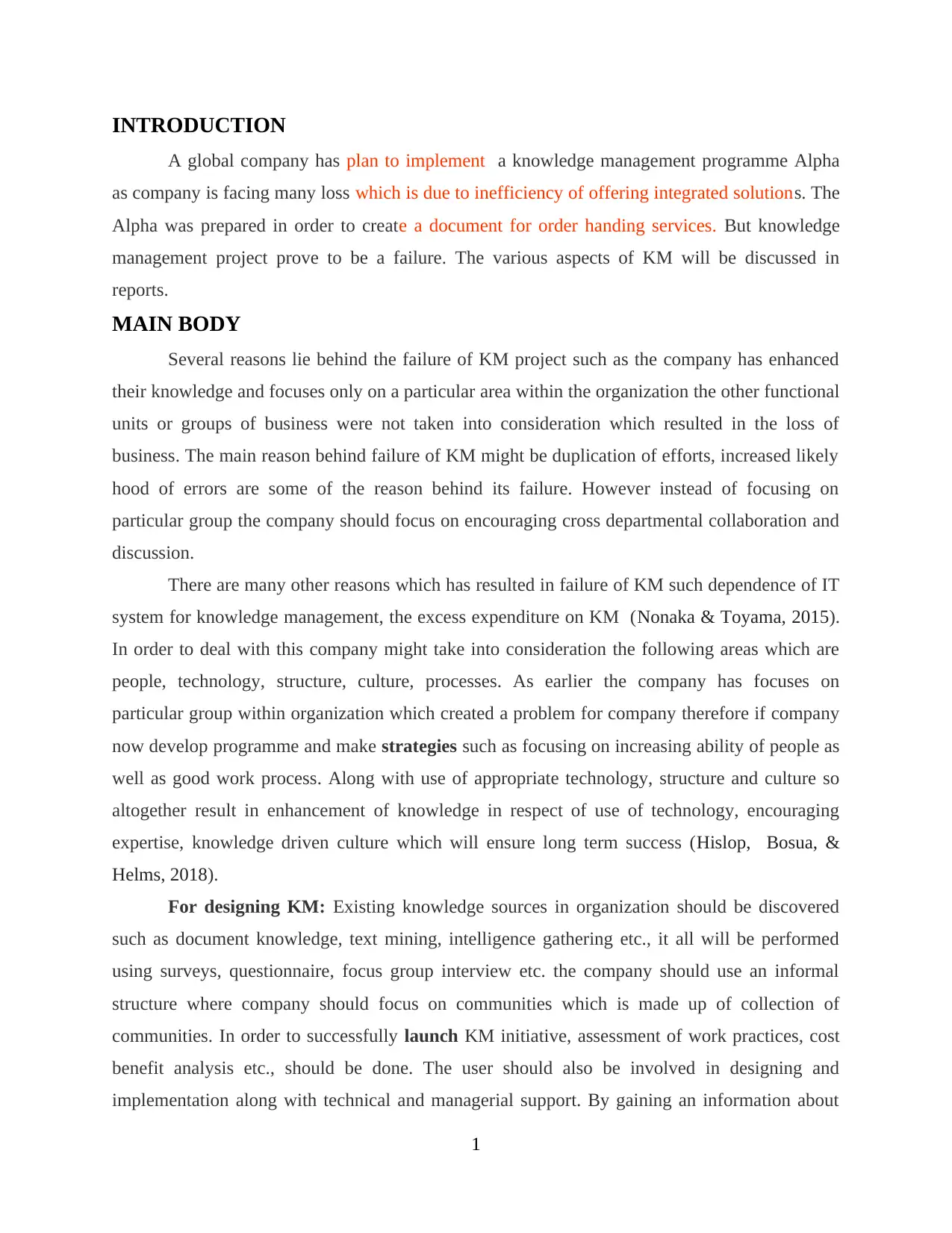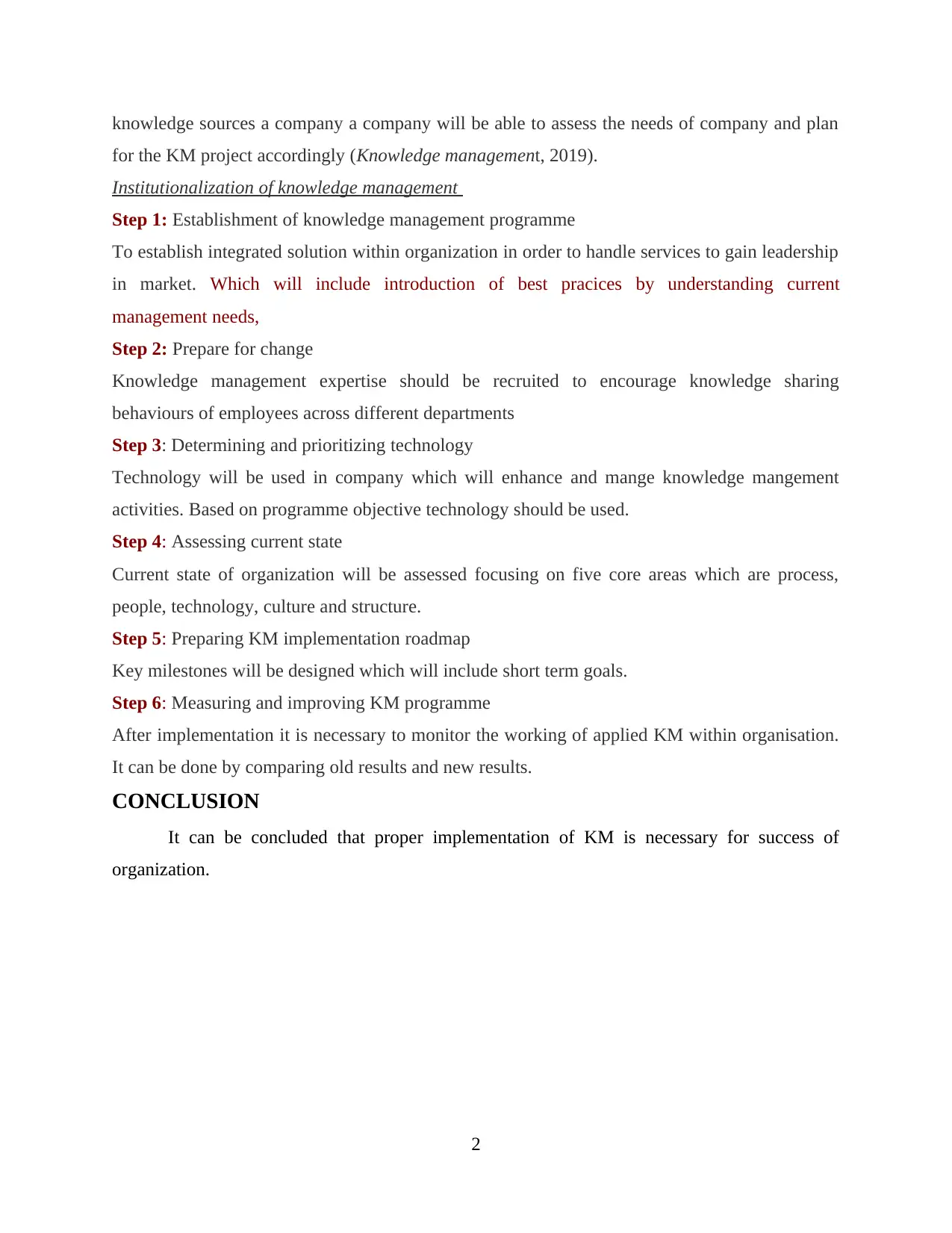Detailed Report: Analysis of a Failed Knowledge Management Project
VerifiedAdded on 2021/02/20
|9
|735
|312
Report
AI Summary
This report analyzes the failure of a knowledge management (KM) project within a global company. The project, aimed at improving order handling services, failed due to various factors, including a focus on specific areas instead of cross-departmental collaboration, duplication of efforts, and over-reliance on IT systems. The report discusses the importance of addressing areas such as people, technology, structure, culture, and processes to improve KM. It suggests discovering existing knowledge sources, using informal structures, and involving users in the design and implementation of KM initiatives. The report outlines a six-step process for institutionalizing KM, including establishing a program, preparing for change, determining technology, assessing the current state, preparing an implementation roadmap, and measuring and improving the program. The conclusion emphasizes the necessity of proper KM implementation for organizational success. The report references relevant literature to support its analysis.
1 out of 9
















![[object Object]](/_next/static/media/star-bottom.7253800d.svg)